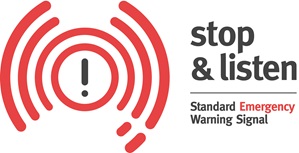Preparing your home
Depending on where you live in the Top End will determine what type of potential disaster you may be exposed to, specifically during our 'wet season'. For example, Territorians residing along the coast will need to prepare their households for the risk of cyclones, severe storm and perhaps storm surge; whereas towns and communities in central NT may be more at risk of floods.
Whatever your risk, you can learn more about preparing your home for the worst in the various brochures ready to download on our NTES Publications page.
What would you do if you had to face a major hazard at home or at work?
Knowing what needs to be done makes it easier to stay calm if an emergency should occur. Preparation is the key to survival and by planning ahead, you can help to reduce the risk of injury and damage to property.
Take the time now to prepare for emergencies by:
- Completing a household emergency plan
- Making a household emergency kit
- Prepare a first-aid kit
- Log on, call up, tune in and listen out
- Household emergency plan
A household emergency plan should be put together as a family, including children. Make sure you discuss:
- plans for when family members will be and will not be home;
- workplace, school or apartment plans that may impact on members of your household;
- what you will do to mitigate damage to your home or contents (e.g. insurance);
- how and where to turn off power, gas and water supplies;
- how and where valuables and important documents will be stored;
- how and where your household emergency kit will be stored;
- your emergency telephone number list; and
- what role each family member will take during an emergency.
- Emergency kit
No matter where you live in the Northern Territory, a household emergency kit is an absolute necessity for every household. Depending on your location, you may need to rely on your own resources to get through until the emergency or disaster has passed or help arrives. The most important thing to remember is to ensure that your kit is able to sustain yourself and every family member for up to 72 hours or more.
Tips for Kits
- Store your kit in a dry area of your household that is easily accessible without electricity.
- Make sure every member of your household knows where the kit is stored.
- Check the contents of your kit at least once a year, to ensure that items still work and consumables have not exceeded their use-by date.
- Remember batteries have expiry dates, water does go stale and non-perishables will perish over a period of time.
- A household emergency kit can also double as a camping kit - stock your kit at the beginning of the wet and use it in the dry each year.
- First aid kit
In the case of a disaster, the likelihood of someone getting hurt is dramatically increased and ensuring that you and your family are adequately prepared for such a situation through training and holding a complete first aid kit could mean the difference between life and death.
There are a number of agencies and organisations within the Northern Territory that provide first aid training courses, and it is recommended that you and your family take a First Aid course with follow-up refresher sessions regularly.
St John Ambulance provides a wide range of first aid kits and products for purchase, as well as First Aid courses.- Log on, call up, tune in and listen out
In the event of an emergency or disaster, you will need to keep abreast of the latest information as it is being released by the Bureau of Meteorology and NT Police, Fire and Emergency Services. You may:
Log on
- For Weather and Warnings, go to www.bom.gov.au
- For Tsunami Warnings, go to www.bom.gov.au/tsunami/index.shtml
- For SecureNT, go to www.securent.nt.gov.au
- For Northern Territory Emergency Service, go to www.emergency.nt.gov.au
Call up
- NT Tropical Cyclone Information (Bureau of Meteorology), 1300 659 211
- NT Coastal and Land Weather Warnings (Bureau of Meteorology), 1300 659 214
- Australian Tsunami Threat Information (1300 TSUNAMI), 1300 878 6264
Tune in
- For ABC Radio Darwin, 105.7FM
- For ABC Radio Katherine, 106.1FM
- For ABC Radio Alice Springs, 783FM
- Find your local frequency at ABC Radio
Listen out
- For the Standard Emergency Warning Signal (SEWS)*
- For emergency alert messages sent to your phone
- For local community safety announcements

*SEWS is a distinctive audio signal that has been adopted to alert the community to the broadcast of an urgent safety message relating to a major emergency/disaster. It is intended for use as an alert signal to be played on public media (such as radio, television, public address systems, mobile sirens), to draw your attention to a following emergency warning. It is meant to attract your attention to the fact that you should take notice of the emergency message.
Within the Northern Territory, you can expect to hear SEWS before cyclone advice, when the cyclone is approximately 6-12 hours away and is still expected to impact your area. When you hear SEWS ensure that you stop and listen - example of what to listen for here.

